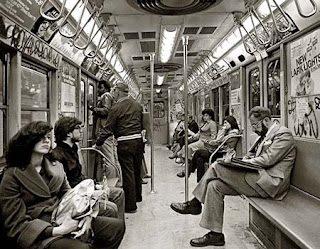
The New York City Rapid Transit Commission (RTC) officially broke ground for the city’s subway system on 24 March 1900. Beginning in 1892, Thomas Edison-style direct current (DC) generators powered trolleys and elevated trains (Els) in Brooklyn. But by the mid-1890s, the Tesla-Westinghouse alternating current (AC) system proved much more practical for powering homes, industry and transportation, as AC could be transmitted efficiently over long distances — a critical advantage to the subway project. In November 1898, Westinghouse received a contract for what would be the subway’s main power station and eight substations. The company had installed large-scale AC dynamos at Niagara Falls, and the RTC needed Westinghouse’s electrical expertise.
Today, the NYC Subway is the city’s largest user of electricity. AC operates signals, station and tunnel lighting, ventilation and miscellaneous line equipment, while DC operates trains and such auxiliary equipment as water pumps and emergency lighting. The system’s 215 electric substations receive high- and low-voltage power from the New York Power Authority, at voltages as high as 27kV AC, prior to transforming it for use within the system. The subway's third rail requires 625 volts DC for operating the trains. Power is distributed throughout the system via 2,500 miles of cable, which passes beneath 7,651 manholes located throughout the city. The power required to operate the subway system during peak hours is about 500 MW. And at 1.8 billion kilowatt hours, the subway’s annual power consumption equals that of the city of Buffalo, New York. (IEEE)
Today, the NYC Subway is the city’s largest user of electricity. AC operates signals, station and tunnel lighting, ventilation and miscellaneous line equipment, while DC operates trains and such auxiliary equipment as water pumps and emergency lighting. The system’s 215 electric substations receive high- and low-voltage power from the New York Power Authority, at voltages as high as 27kV AC, prior to transforming it for use within the system. The subway's third rail requires 625 volts DC for operating the trains. Power is distributed throughout the system via 2,500 miles of cable, which passes beneath 7,651 manholes located throughout the city. The power required to operate the subway system during peak hours is about 500 MW. And at 1.8 billion kilowatt hours, the subway’s annual power consumption equals that of the city of Buffalo, New York. (IEEE)
No comments:
Post a Comment